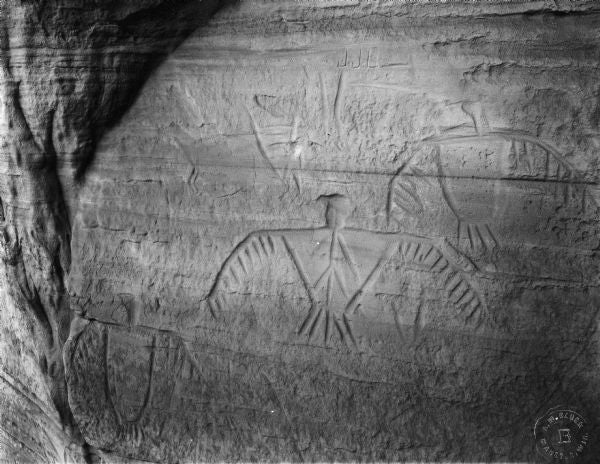Perhaps the most famous cave paintings in the world, the Lascaux grotto, were discovered near Montignac, France, this week in 1940. But rock art isn’t just in Europe or the southwestern United States. Wisconsin has its own collection of stories and symbols written on the land, documenting the rich history of the native people who first called Wisconsin home.
Wisconsin has nearly 200 rock art sites, mostly in the southwestern part of the state. Carvings fall under the broad category of petroglyphs, while paintings and drawings such as Lascaux are pictographs. Most of Wisconsin’s rock art dates from before European contact in the 1600s.
The above image is of thunderbirds carved into sandstone buttes in Twin Bluffs in Juneau County. The Mississippi Valley Archaeology Center suggests the carvings likely date to the late prehistoric period between 250 BCE and 1500 CE. The petroglyphs at the site include several full and partial thunderbirds, one bird, a bear or buffalo-like mammal and some abstract lines. Unfortunately, the site also contains 19th century and more modern graffiti, a problem plaguing such sites around the world.
News with a little more humanity
WPR’s “Wisconsin Today” newsletter keeps you connected to the state you love without feeling overwhelmed. No paywall. No agenda. No corporate filter.
Wisconsin even has its own Lascaux-like cave. A cave discovered in 1998 in southwest Wisconsin contains more than 100 charcoal drawings of birds, humans, deer and other abstract designs believed to date back to 700 CE. The drawings were likely created by the Effigy Mound Culture, of which the Ho-Chunk are believed to be descendants.
Wisconsin Public Radio, © Copyright 2026, Board of Regents of the University of Wisconsin System and Wisconsin Educational Communications Board.
